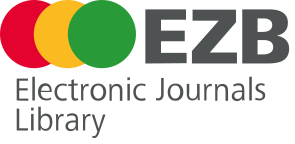Diagnosis and management of amblyopia in school children
DOI:
https://doi.org/10.56294/nds2025165Keywords:
Amblyopia, Visual Acuity, School-aged ChildrenAbstract
Amblyopia, as a neurological disease, is the result of abnormal stimulation of the brain during a critical period of visual development. This is the main etiology of reduced spatial vision during childhood, historically caused by strabismus, depravation, and anisometropia. The objective of this research was the diagnosis and management of amblyopia in school children in Aragua, Venezuela in 2024. Materials and methods, a cross-sectional descriptive study was carried out with a sample of 69 primary school students, with an average age of 8 years. Socio-demographic data, history of visual pathologies, use of optical correction, clinical typicity, warning signs and visual acuity were collected using optotypes and the JAEGER near vision card. In addition, monocular therapeutic techniques were applied to children with amblyopia. Results showed that 81% of the students denied having a history of visual pathologies, while 15% reported myopia and 4% hyperopia. 91% did not use optical correction. Regarding clinical typicity, 87% did not present signs or symptoms of amblyopia, and 90% showed no warning signs. The visual acuity assessment revealed that 83% of the students had a visual acuity of 20/20 in both eyes, and 90% had a close visual acuity of 1+ in both eyes. After refractive correction, 9% reached 20/20 in both eyes, and after treatment, 91.30% did not require additional follow-up. The applied monocular therapeutic techniques showed a significant improvement in the visual acuity of the amblyopic eye. Conclusion, it is concluded that most of the students presented a normal visual acuity after treatment, which indicates the effectiveness of the monocular therapeutic techniques applied. The low prevalence of optical correction uses and the lack of signs and symptoms in most students suggest a need for greater awareness and education about visual pathologies in the school population.
References
1. Kniestedt C, Stamper RL. Visual acuity and its measurement. Ophthalmol Clin North Am. 2003;16:155-70. DOI: https://doi.org/10.1016/S0896-1549(03)00013-0
2. Repka MX, Beck RW, Holmes JM, Birch EE, Chandler DL, Cotter SA, et al.; Pediatric Eye Disease Investigator Group. A randomized trial of patching regimens for treatment of moderate amblyopia in children. Arch Ophthalmol. 2003 May;121(5):603-11. doi: 10.1001/archopht.121.5.603. PMID: 12742836. DOI: https://doi.org/10.1001/archopht.121.5.603
3. Barrera OL, Jerez EM. Ambliopía. Caracterización clínico-epidemiológica. Multimed. 2019 Oct;23(6):1191.
4. Organización Mundial de la Salud. Al menos 2200 millones de personas tienen deficiencia visual o ceguera; de estos casos, más de 1000 millones podrían haberse evitado o aún no han sido tratados [Internet]. 2019]. Available from: https://www.who.int/es/news/item/08-10-2019-who-launches-first-world-report-on-vision.
5. Teusa M, Noval S. Valoración oftalmológica del niño normal. Medidas preventivas. Signos de alarma. Servicio de Oftalmología. Hospital Universitario Príncipe de Asturias. 2009. DOI: https://doi.org/10.1016/S1696-2818(09)73208-1
6. Wang J, Malik A, et al. Intense versus standard regimens of intermittent occlusion therapy for unilateral moderate amblyopia in children: study protocol for a randomized controlled trial. Salus University Pennsylvania College of Optometry. 2020. DOI: https://doi.org/10.1186/s13063-020-04284-4
7. Heiting G. Problemas de visión en niños en edad escolar [Internet]. Todo sobre visión. Available from: https://www.allaboutvision.com/es/vision-infantil/problemas-de-vision-en-ninos-en-edad-escolar/.
8. Tailor V, Ludden S, Bossi M, Bunce C, Greenwood JA, Dahlmann-Noor A. Binocular versus standard occlusion or blurring treatment for unilateral amblyopia in children aged three to eight years. Cochrane Database Syst Rev. 2022 Feb 15;2(2):CD011347. doi: 10.1002/14651858.CD011347.pub3. DOI: https://doi.org/10.1002/14651858.CD011347.pub3
9. Khazaeni L. Ambliopía. Loma Linda University School of Medicine. Manual MSD Versión para Profesionales. 2024.
10. Merchante M. Ambliopía y estrabismo. Pediatr Integral. 2018;XXII(1):32-44.
11. Birch EE. Amblyopia and binocular vision. Prog Retin Eye Res. 2013 Mar;33:67-84. doi: 10.1016/j.preteyeres.2012.11.001. Epub 2012 Nov 29. PMID: 23201436; PMCID: PMC3577063. DOI: https://doi.org/10.1016/j.preteyeres.2012.11.001
12. León T, De la Torre N, Cordero D, Reyes I, Lozano Y, Monteagudo M. Facultad de Tecnología de la Salud. Volumen 12 Número 4 (2021): OCT-DIC. ISSN: 2218-6719 RNPS: 2252.
13. Paliz Sánchez CR, Delgado Cruz MV, Flores Valero MF. Estrategias farmacológicas para la corrección de la ambliopía. UCT. 2024 Jun;28(123):82-93. Available from: http://ve.scielo.org/scielo.php?script=sci_arttext&pid=S1316-48212024000200082&lng=es. Epub 2024 Oct 1. DOI: https://doi.org/10.47460/uct.v28i123.807
14. Capetillo Biart O, Triana Casado I, Martínez Legón ZC, Roche Caso S, Broche Hernández A. Frecuencia de la ambliopía en escolares. Rev. Cubana Pediatr. 2011 Dec;83(4):372-81. Available from: http://scielo.sld.cu/scielo.php?script=sci_arttext&pid=S0034-75312011000400005&lng=es.
15. Vignolo M, Cibilis J, Gerometta R, Cibils M. Agudeza visual en estudiantes universitarios de la Universidad Nacional del Nordeste. Rev. Investig Científica Tecnológica. 2025;8(2):6-14. Available from: https://revista.serrana.edu.py/rict/article/view/416. DOI: https://doi.org/10.36003/Rev.investig.cient.tecnol.V8N2(2024)1
Published
Issue
Section
License
Copyright (c) 2025 Patricia Acosta, Nibia Osorio, Carmen Puebla, Hayskell Falcón, Yuraima García (Author)

This work is licensed under a Creative Commons Attribution 4.0 International License.
The article is distributed under the Creative Commons Attribution 4.0 License. Unless otherwise stated, associated published material is distributed under the same licence.






